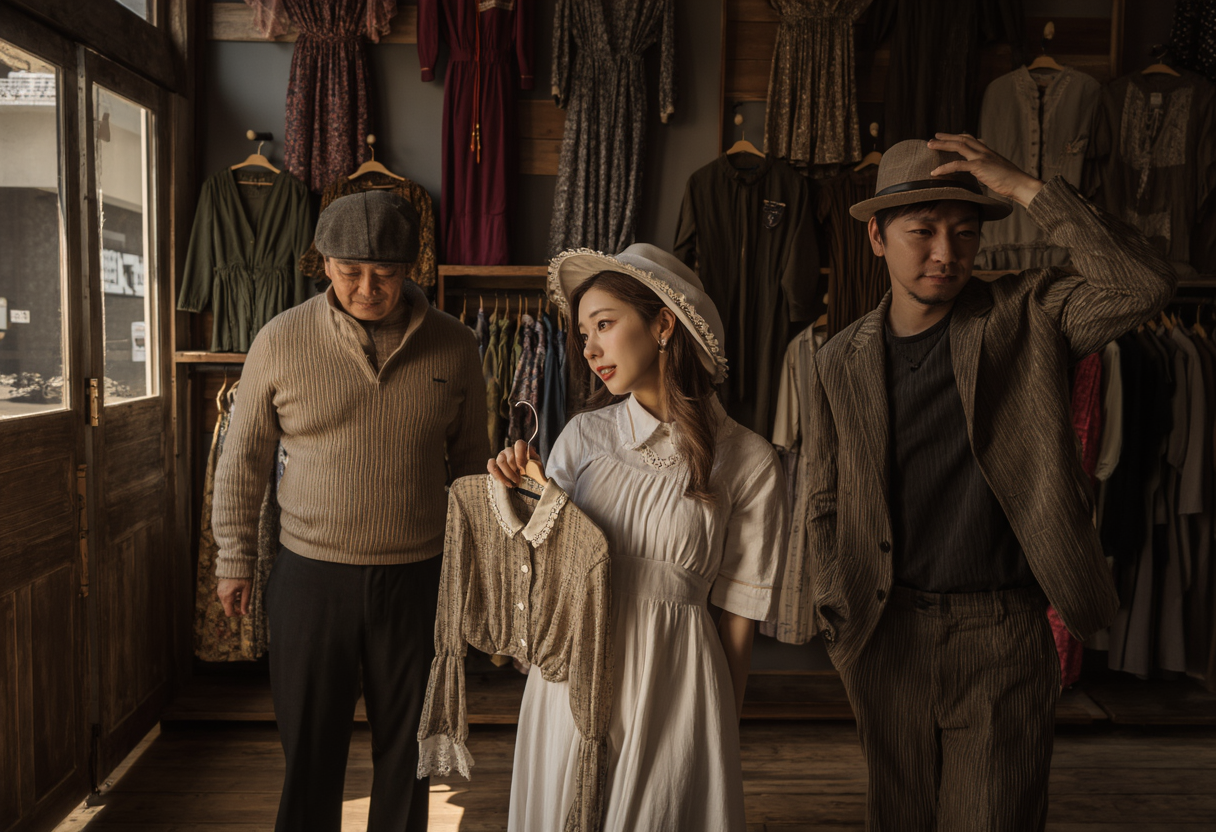The Timeless Appeal of Vintage Clothing: Why It Matters Today
Vintage clothing has transcended mere fashion trends to become a cultural statement. This article explores its allure, significance in sustainability, and its role in self-expression for modern consumers. By examining various aspects of vintage clothing, we reveal why these pieces captivate so many and how they embody a rich history worth preserving.
The Everlasting Charm of Vintage Clothing
Vintage clothing captures an authentic charm that contemporary fashion often struggles to replicate. For many, wearing vintage means embracing a story woven into each fabric—whether it’s a vintage dress from the 1950s or a retro denim jacket. The unique aesthetic of vintage clothing not only allows individuals to stand out but also helps to connect them to past trends and styles. By choosing vintage clothing, consumers celebrate individuality over the mass-produced garments dominating the market today. Moreover, vintage clothing can often be seen as a sustainable choice, as it promotes recycling and encourages a shift away from fast fashion. As we delve deeper into the vintage scene, it becomes evident that this fashion choice is as much about the journey of style as it is about personal expression.
Sustainability in Vintage Clothing: A Responsible Choice
The rise of environmental consciousness has drawn many consumers towards vintage clothing. These pieces offer a solution to the considerable waste generated by the fashion industry. By opting for vintage clothing, individuals contribute to a circular economy, reducing their carbon footprint. Each vintage item has already been manufactured, thus choosing to wear these garments minimizes the demand for new textile production. Furthermore, vintage clothing is often made from higher-quality materials, ensuring durability and longevity. This shift not only benefits the environment but also adds value to personal wardrobes. For those aiming to be fashion-forward while making responsible choices, vintage clothing serves as a perfect blend of style and sustainability. This commitment to mindful consumption is increasingly becoming a hallmark of modern fashion enthusiasts.
Self-Expression Through Vintage Fashion
Wearing vintage clothing is a strong form of self-expression for many. Each piece holds a narrative—reflecting personal stories and styles that resonate with the wearer. Unlike mass-produced fashion, vintage clothing allows for a more individualized statement, often enabling people to showcase their unique tastes. Artists and influencers have propelled the vintage clothing movement, showcasing how these pieces can be integrated into contemporary wardrobes. Each accessory or clothing choice can convey an aspect of personal identity, adding layers to how individuals are perceived in society. The revival of retro styles further highlights this trend, as people seek to blend nostalgic elements with modern fashion sensibilities. In essence, vintage clothing fosters creativity and individuality, empowering wearers to curate their style narratives.
The Cultural Significance of Vintage Clothing
Vintage clothing is steeped in cultural significance, acting as a physical representation of different eras and the social movements associated with them. Each decade has its unique fashion statements that correspond with historical events and societal shifts. For instance, clothing from the 1960s often reflects the counterculture movement, whereas pieces from the 1980s might embody the spirit of excess and boldness. Many consumers are drawn to vintage clothing not just for its aesthetic appeal but also for the history it encapsulates. As a result, it plays a critical role in preserving cultural heritage. Vintage clothing serves as a tangible link to the past, allowing individuals to engage with history in a personal and fashionable manner. By embracing these garments, we honor the legacies of those who wore them before us.
Shopping for Vintage Clothing: Tips and Tricks
Finding the perfect vintage clothing can be an exciting adventure. When hunting for these unique pieces, it helps to know what to look for and where to shop. Thrift stores, estate sales, and dedicated vintage shops offer a plethora of options, but understanding trends can enhance the search. For instance, familiarize yourself with labels, as many vintage clothes come from specific designers or brands that indicate quality and value. Maintaining a keen eye for alterations that may be needed adds to the experience, ensuring that the vintage clothing fits comfortably and complements your style. Lastly, patience is key; the right piece often requires time and careful curation. By approaching vintage shopping with an adventurous spirit, one can uncover truly remarkable additions to their wardrobe.
Conclusion: The Future of Vintage Clothing
The future of vintage clothing appears promising, reflecting a growing appreciation for sustainable fashion choices and unique self-expression. As society continues to veer away from fast fashion, the allure of vintage clothing will likely grow stronger. New generations are recognizing the value in thrift shopping, eco-consciousness, and the storytelling behind each garment. The intersection of personal identity and cultural significance keeps vintage clothing relevant and desirable. It’s not just a trend; it’s a movement towards more meaningful fashion choices. As we embrace the past, we create a more sustainable and expressive future, solidifying vintage clothing's place in modern wardrobes.
